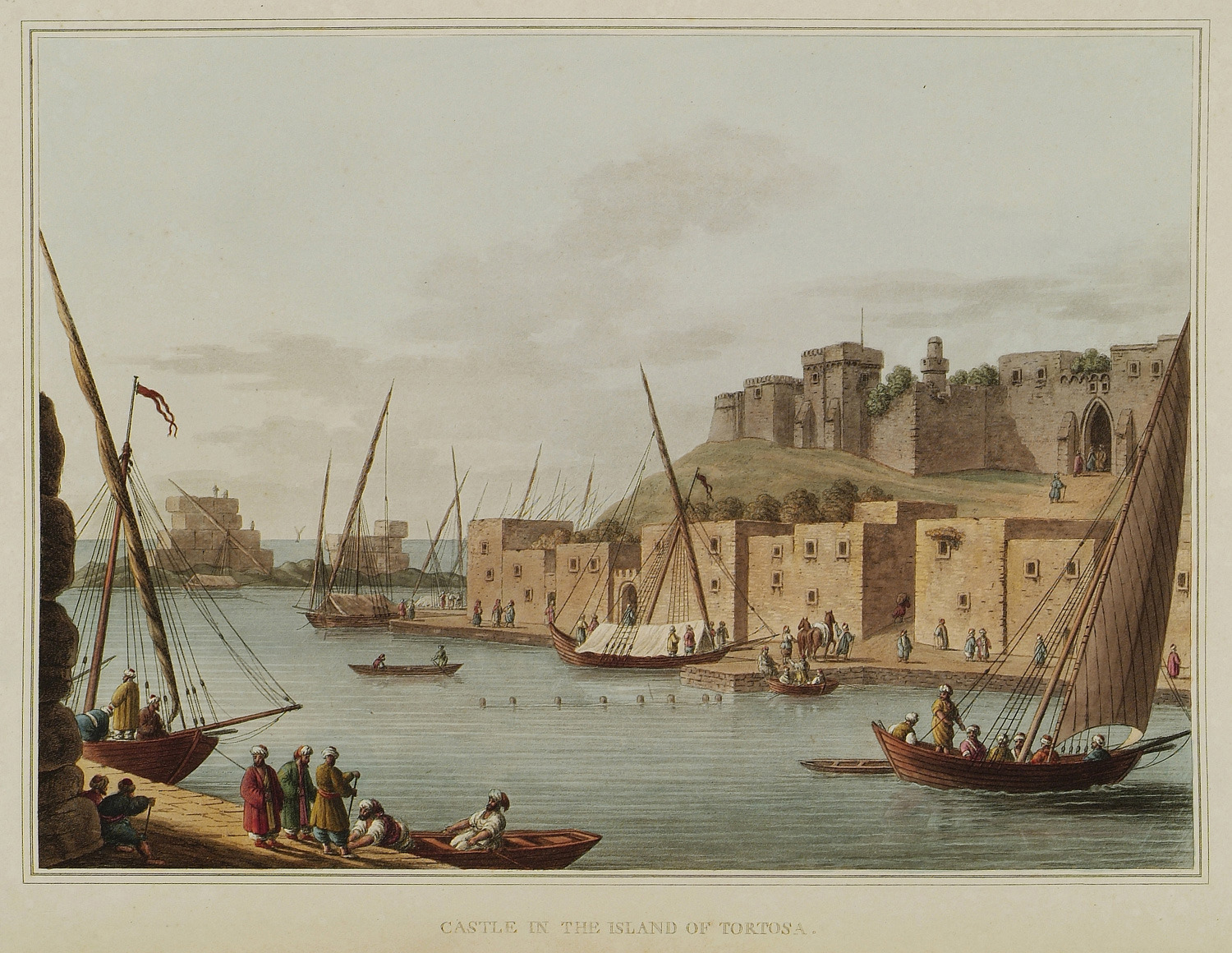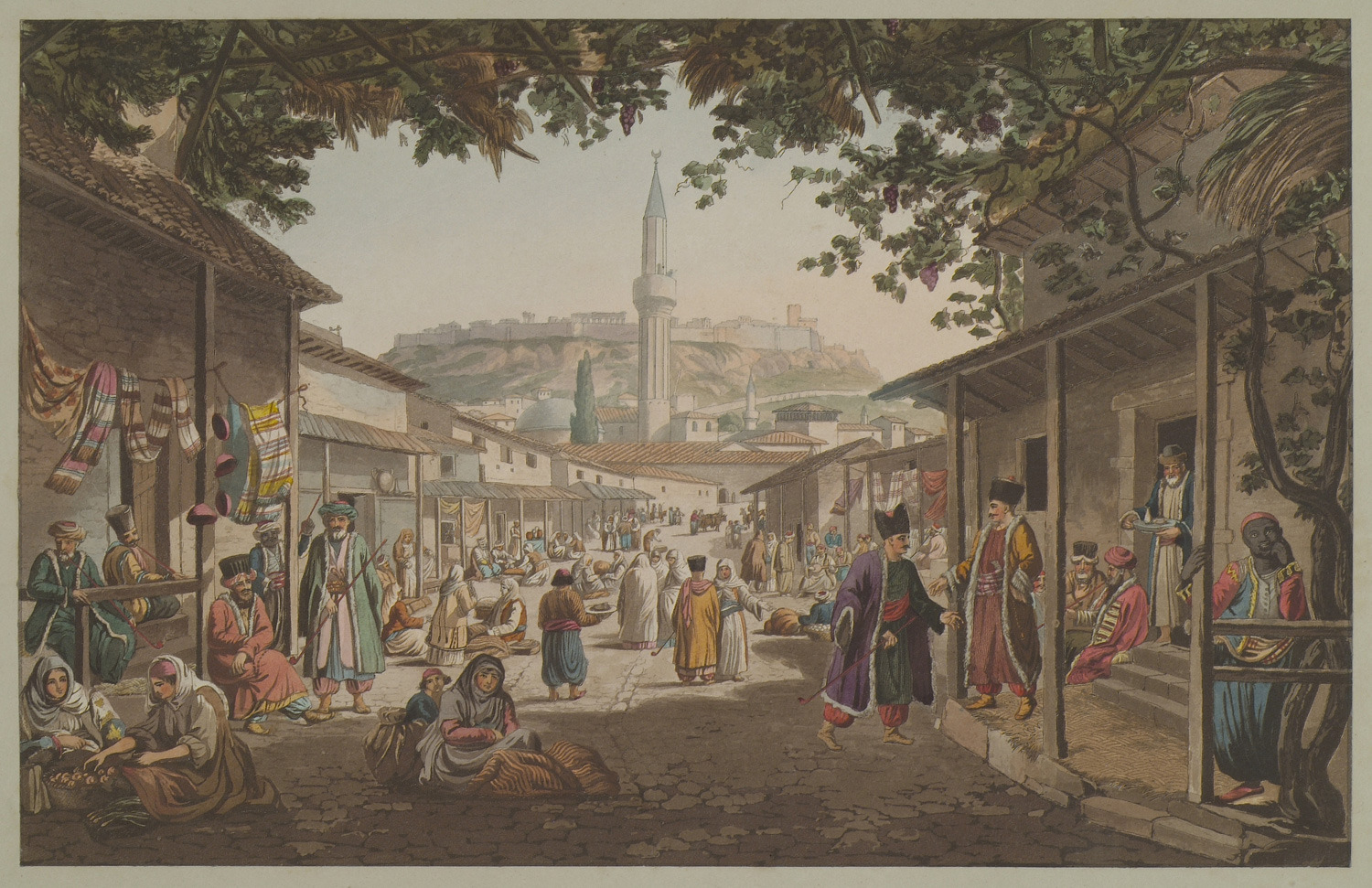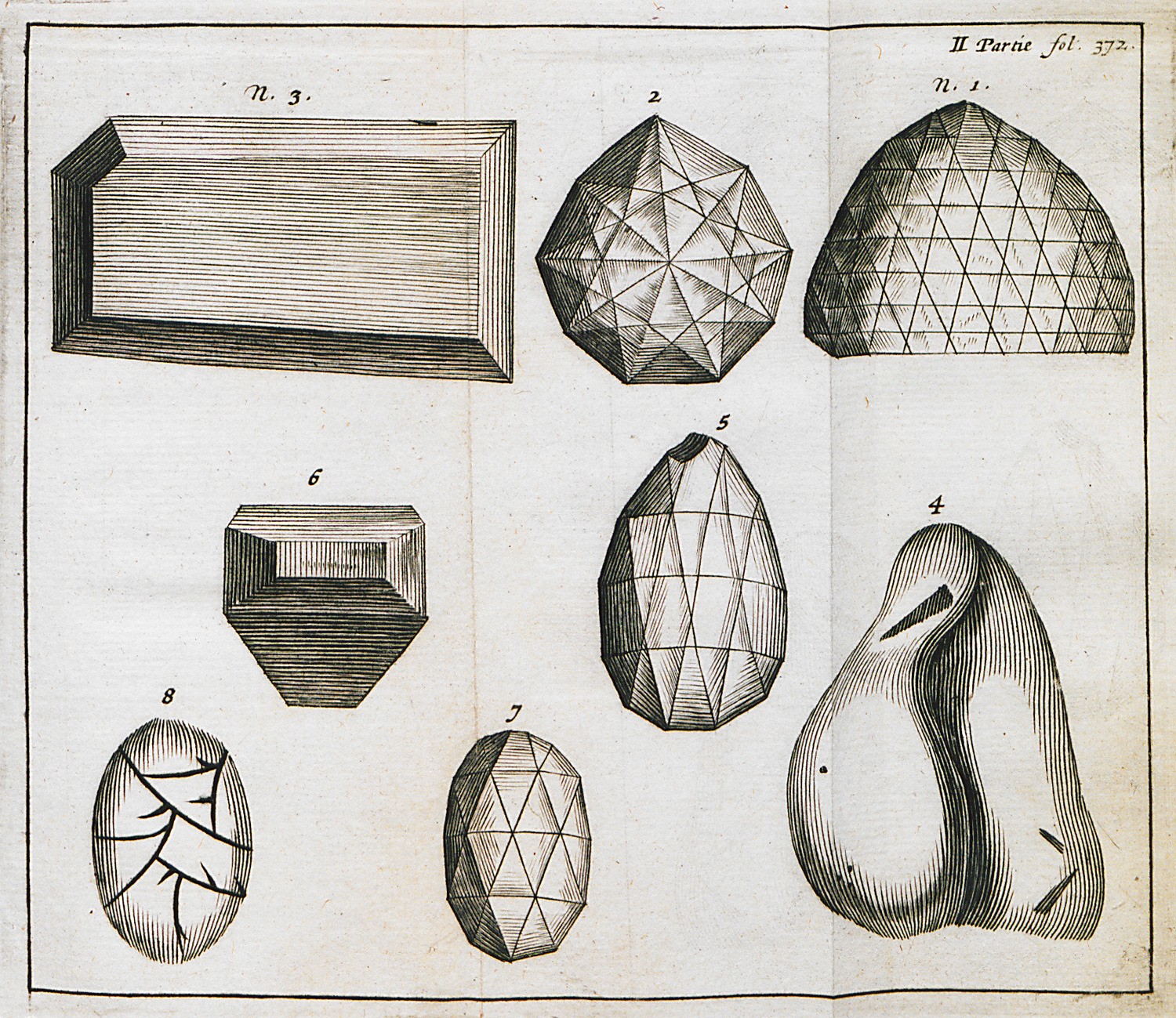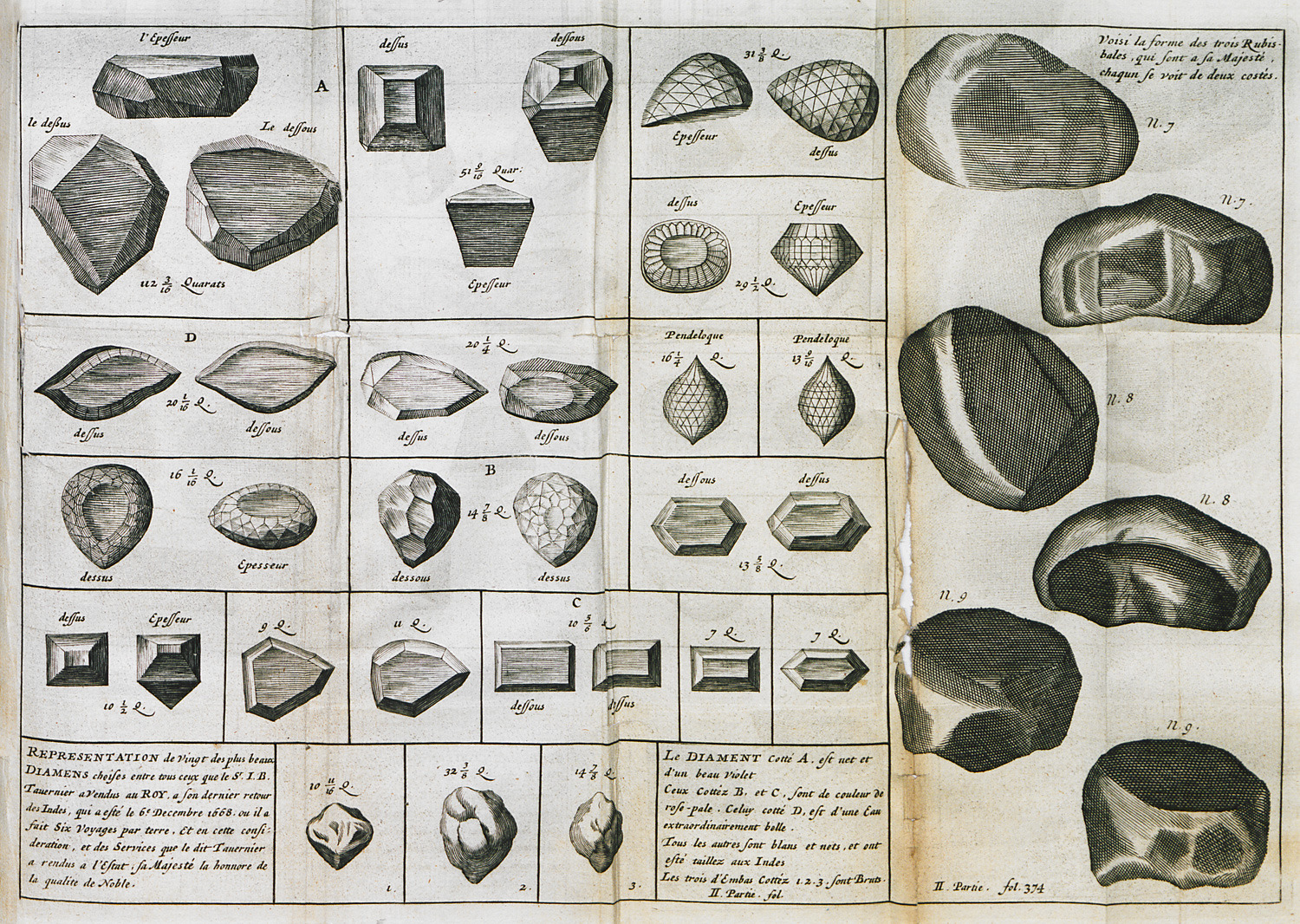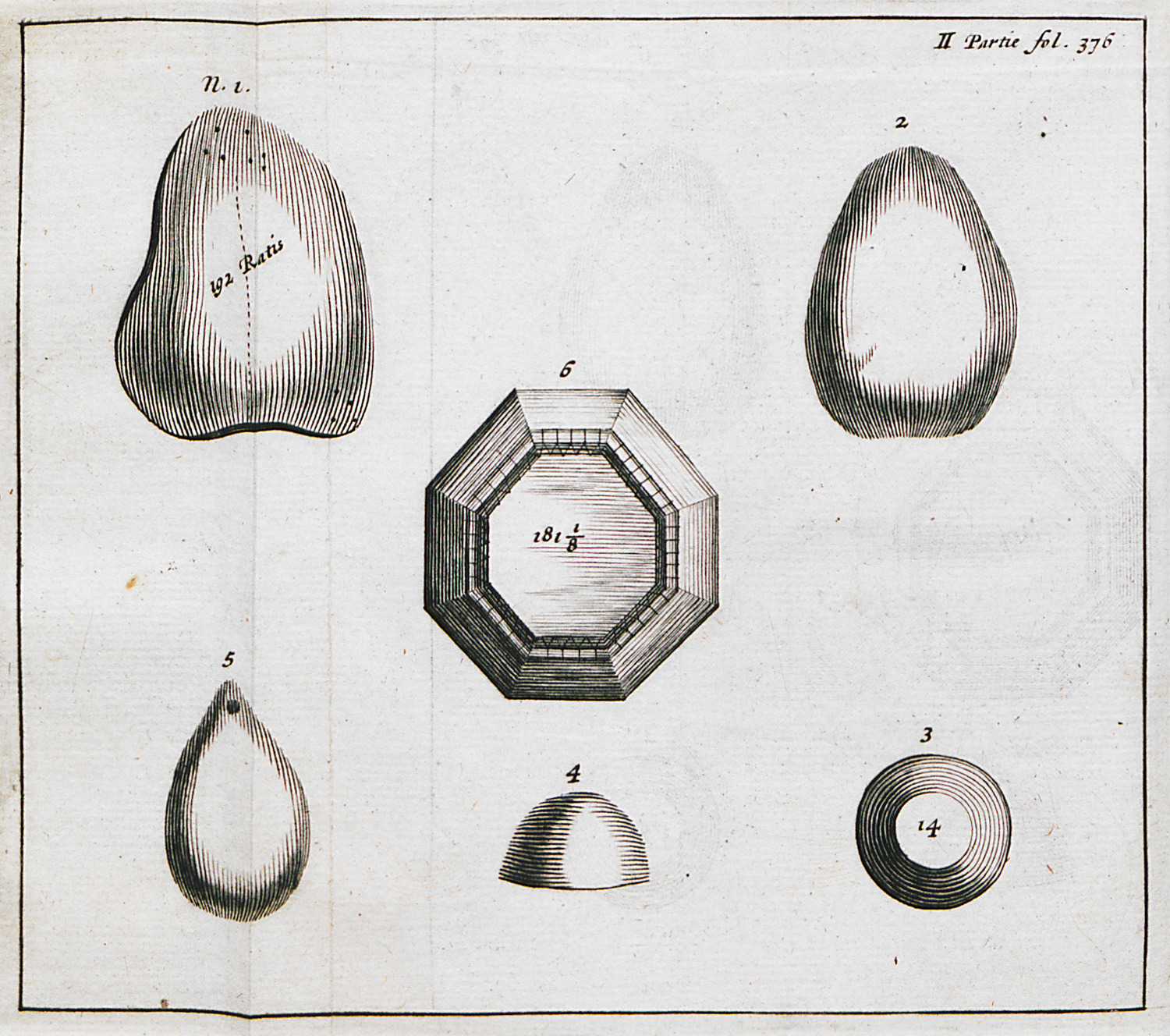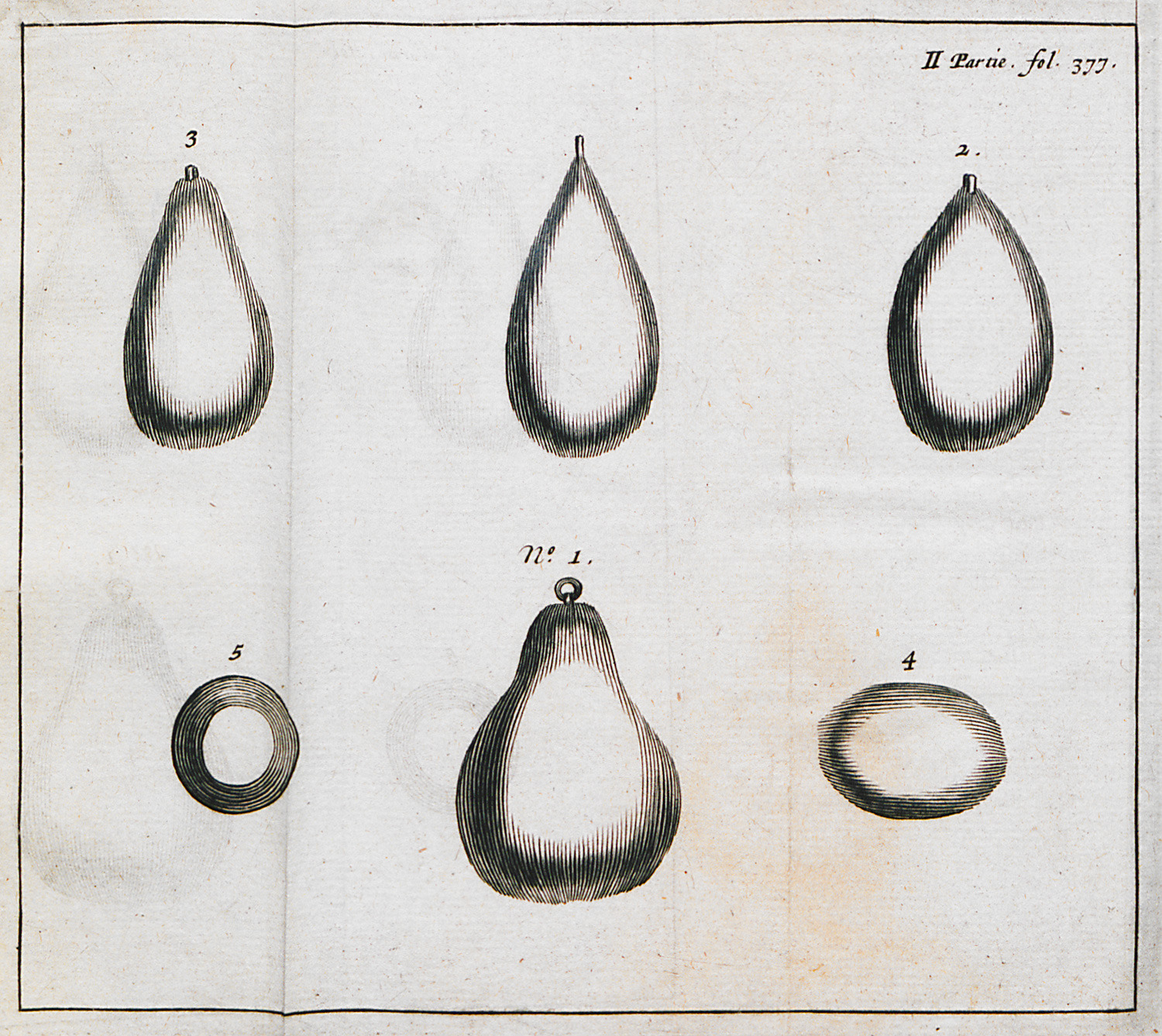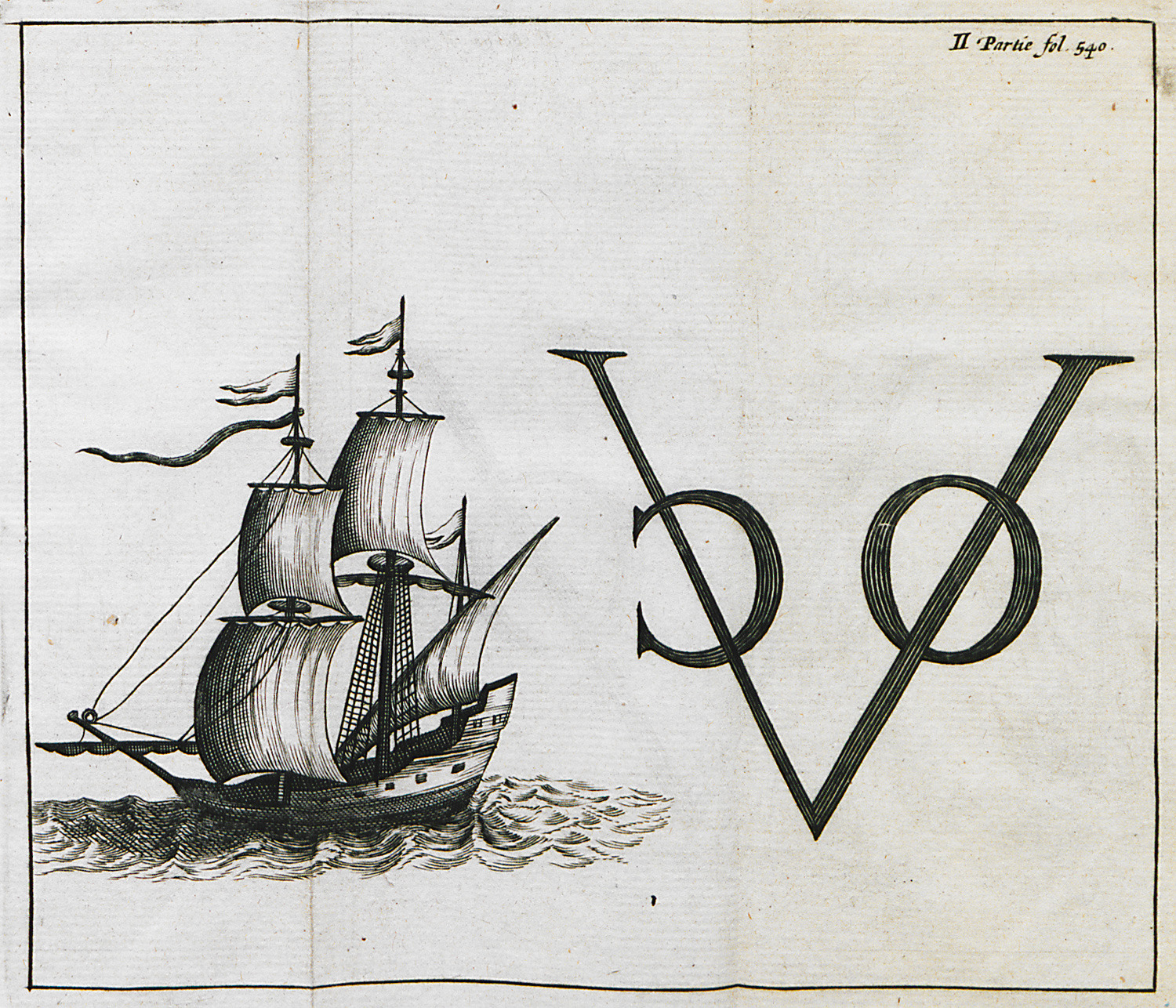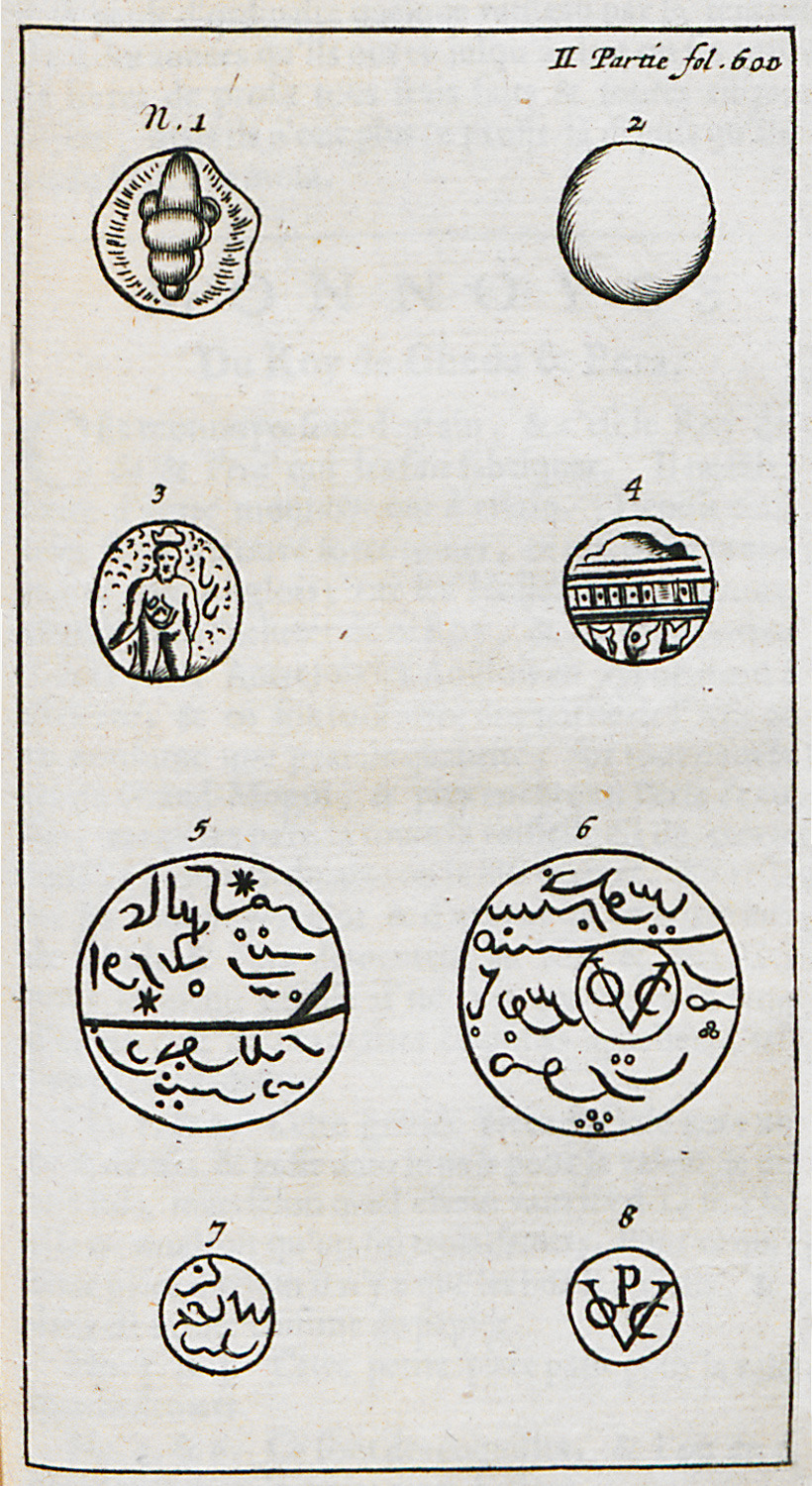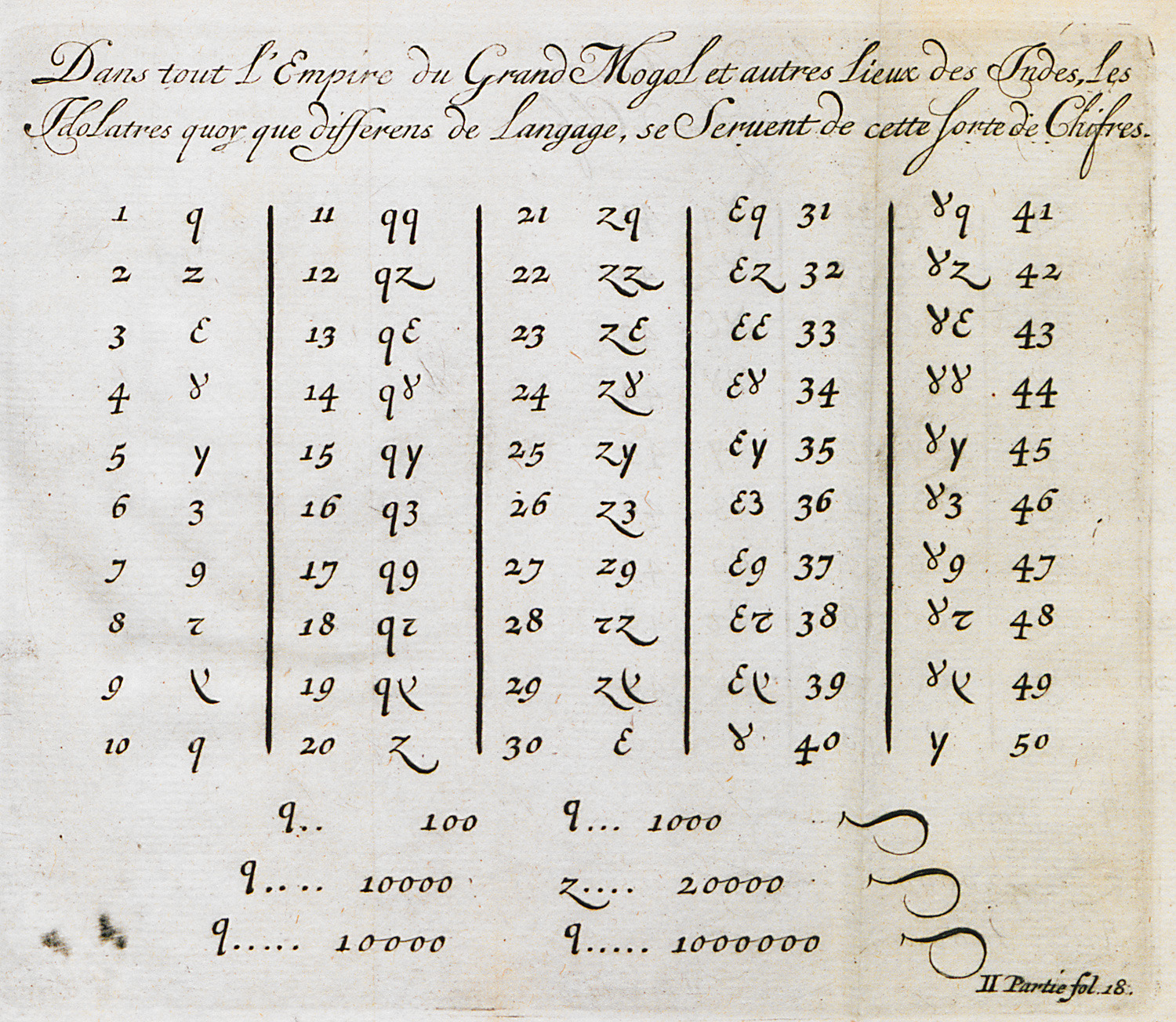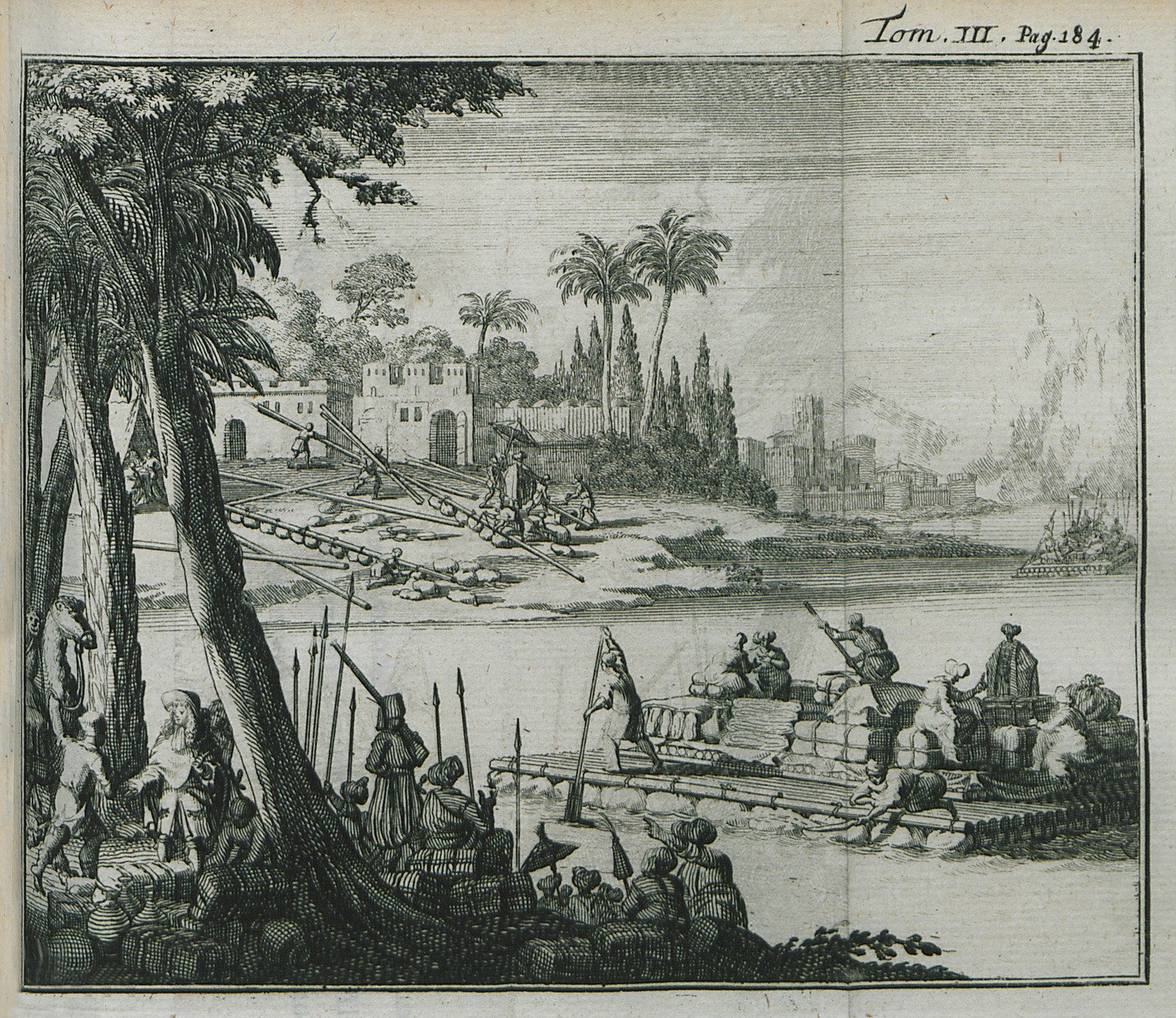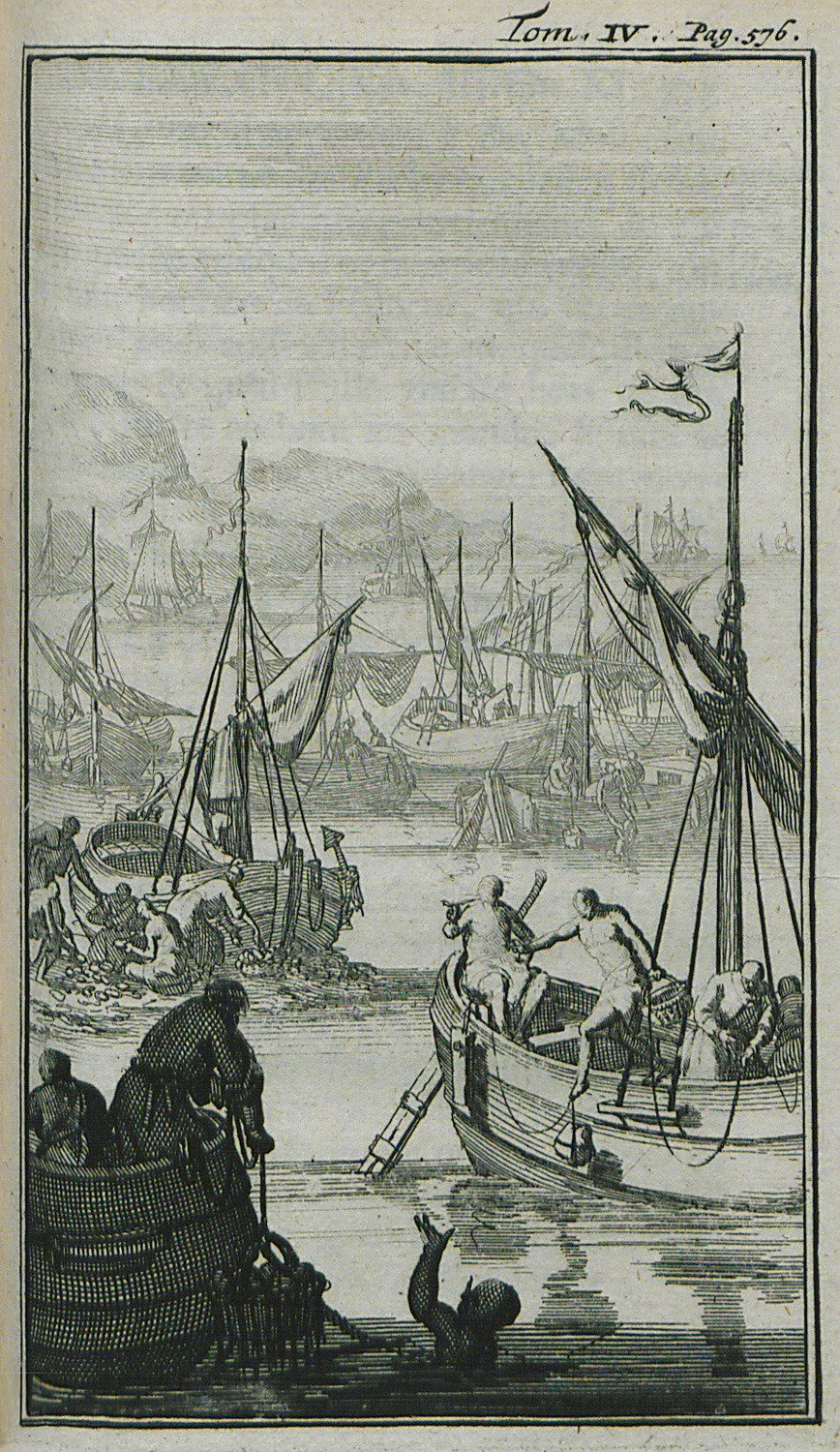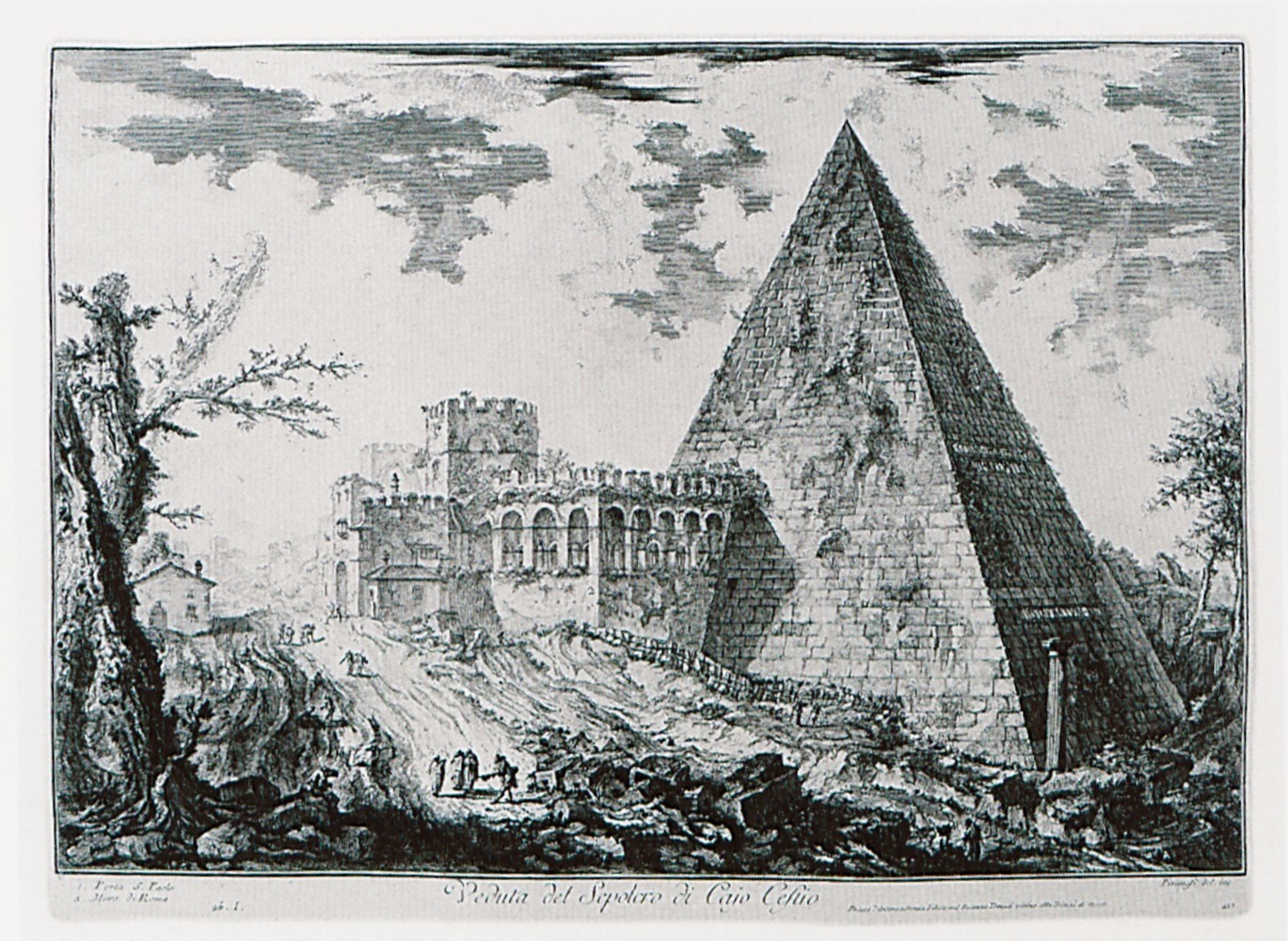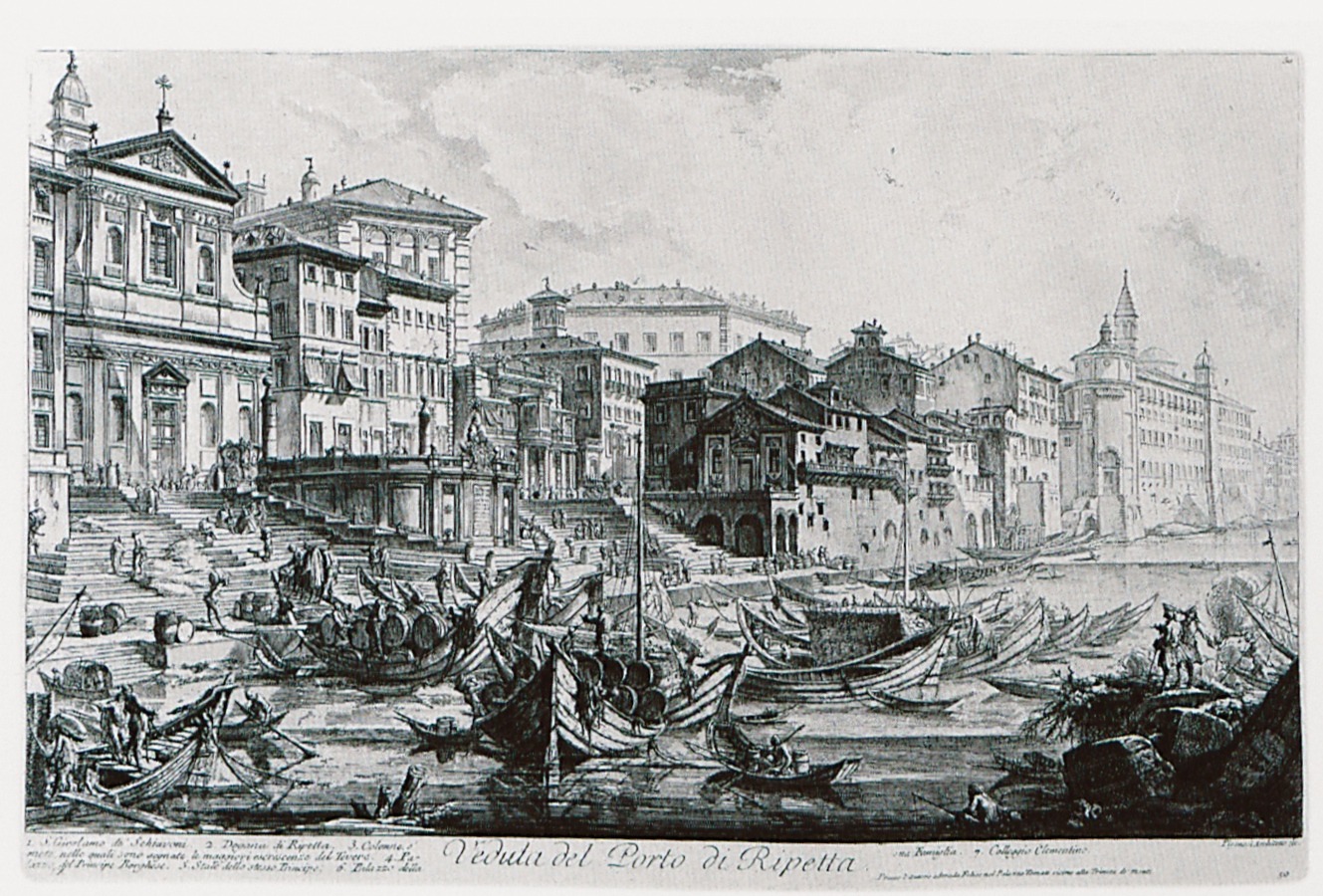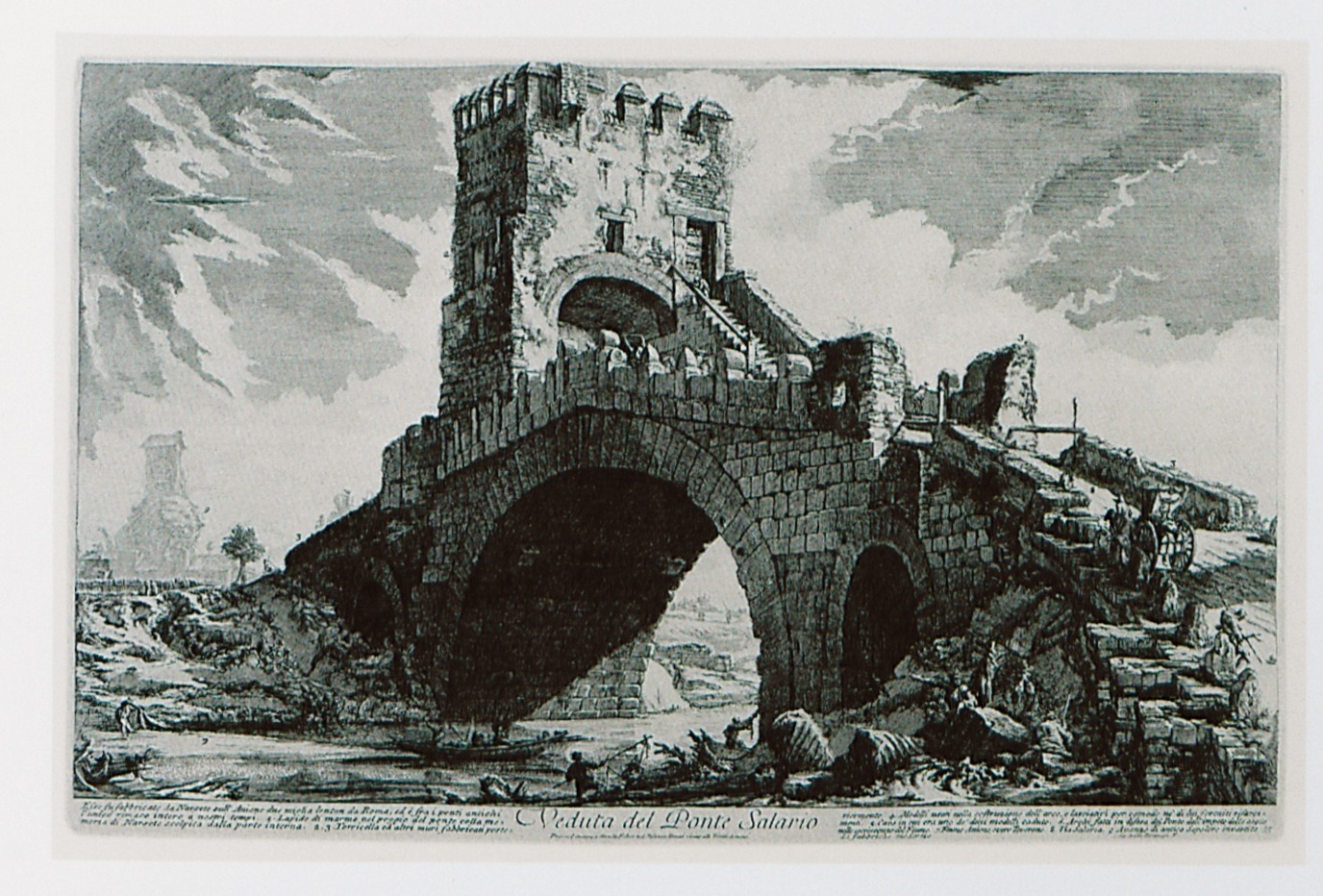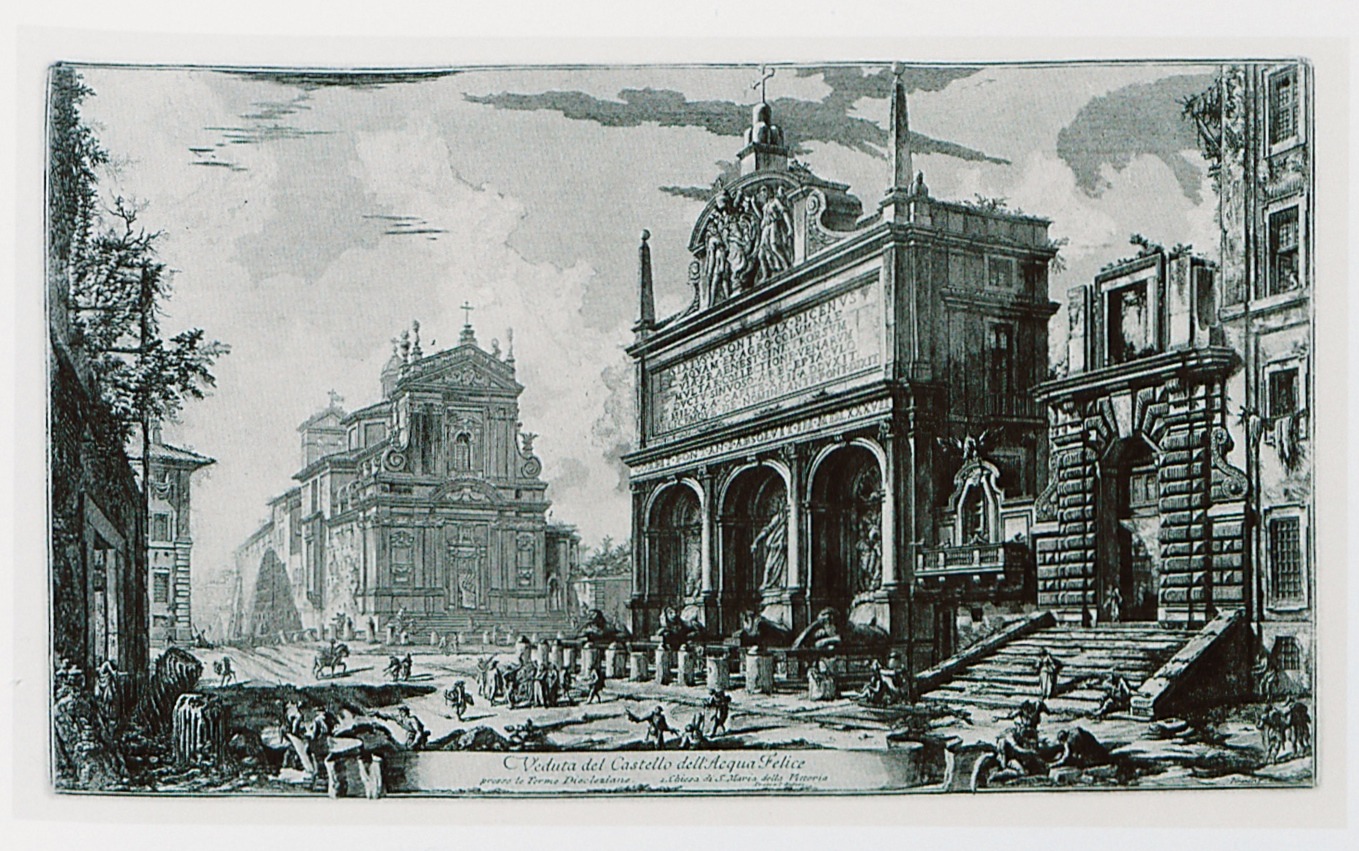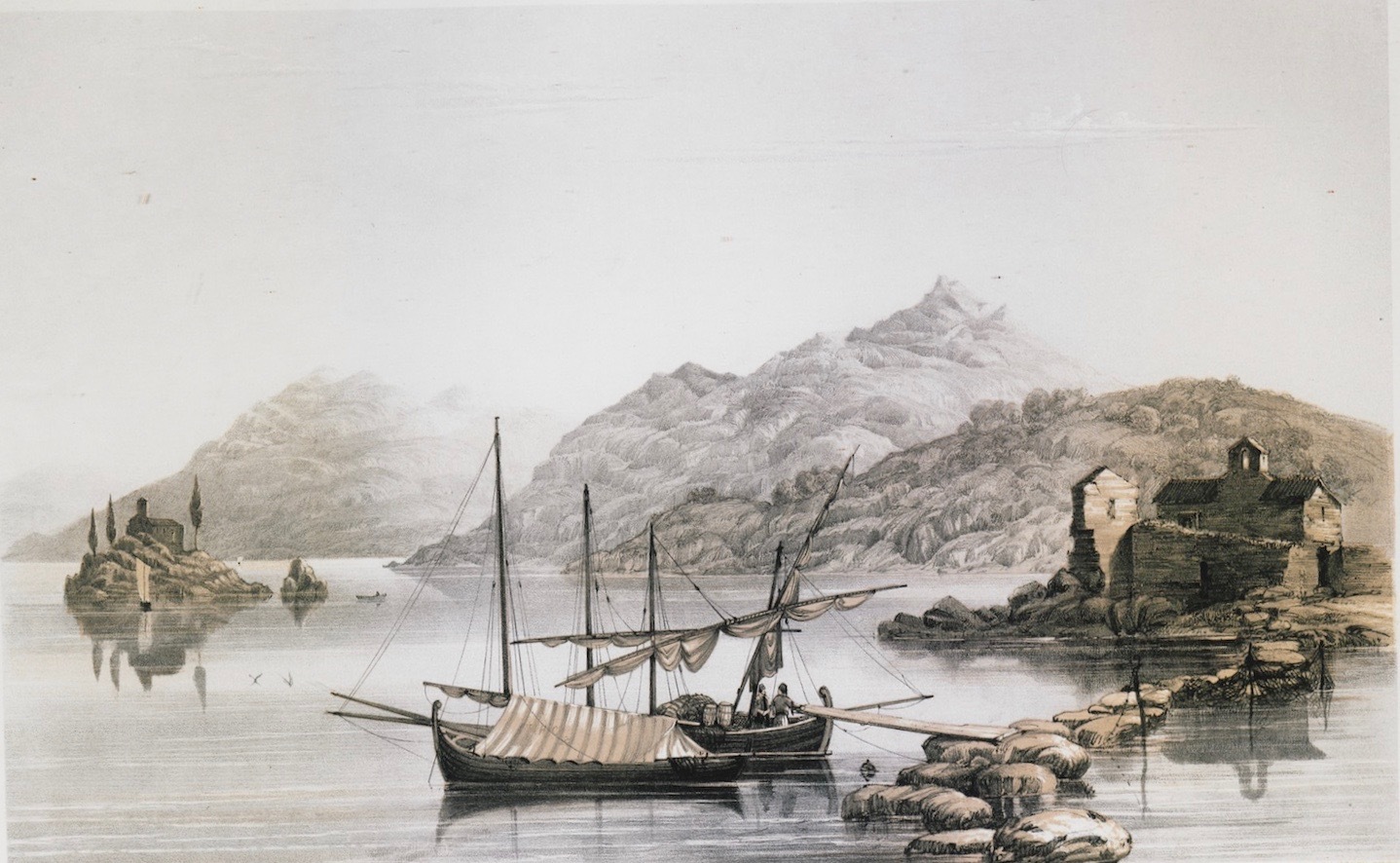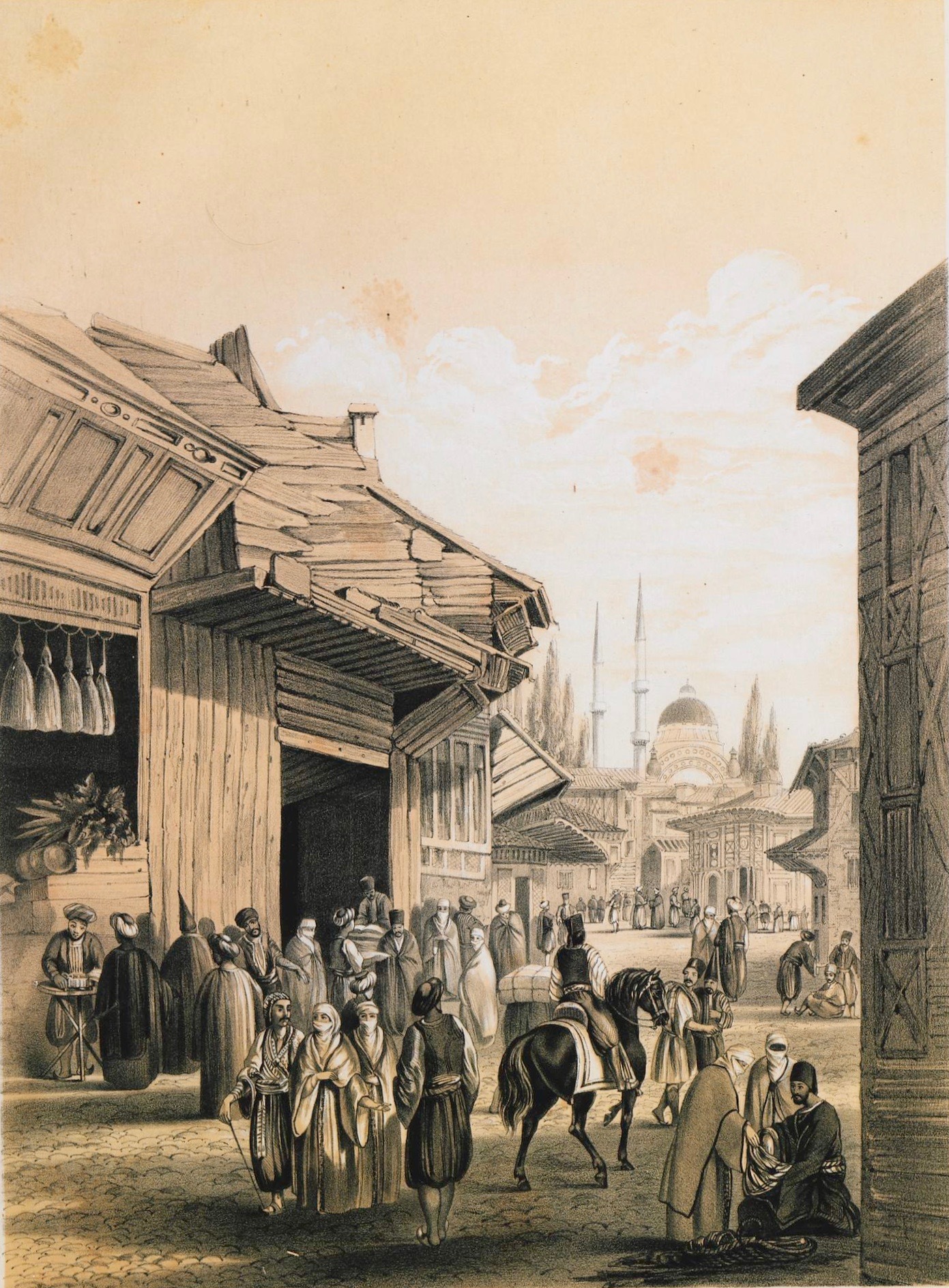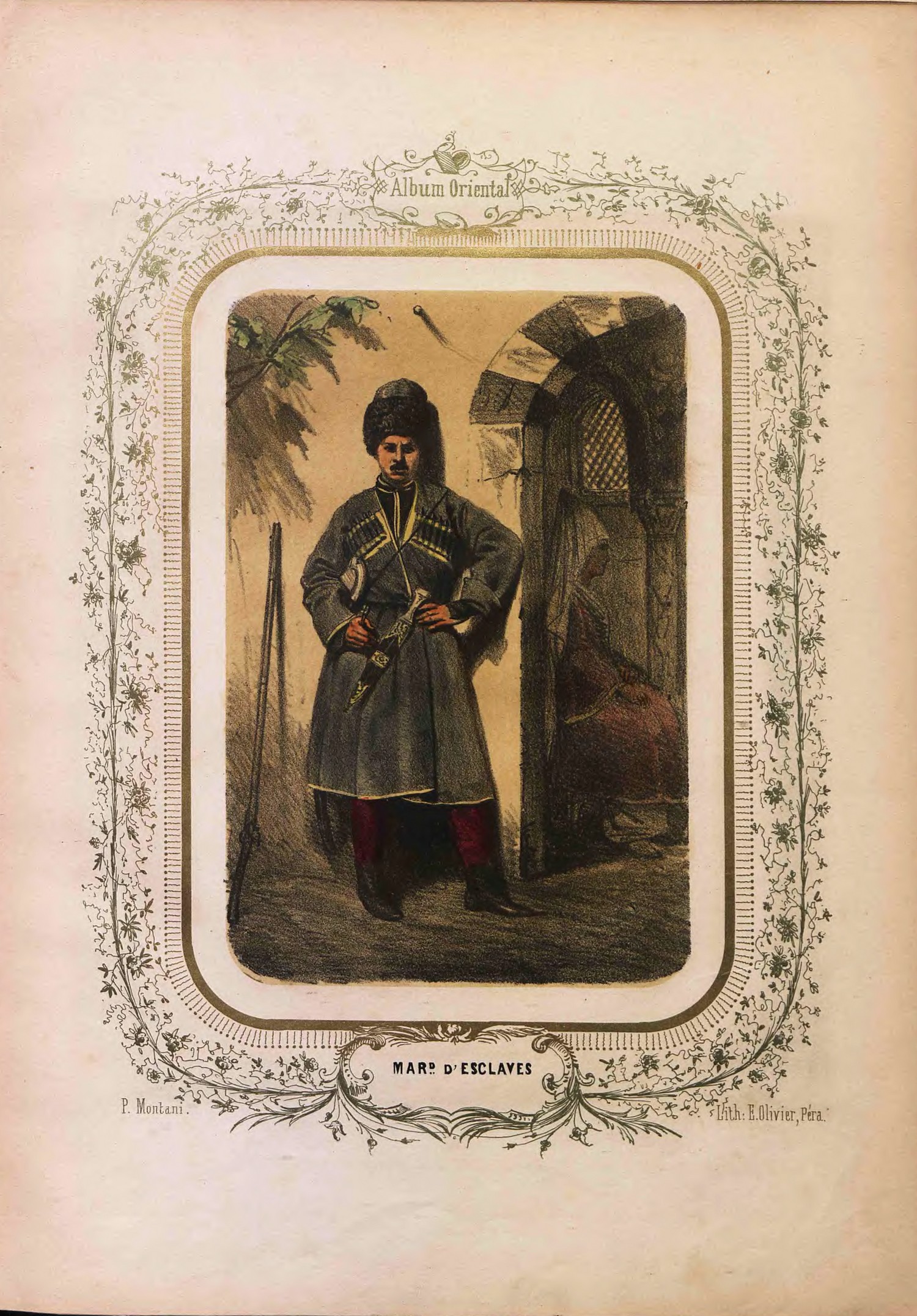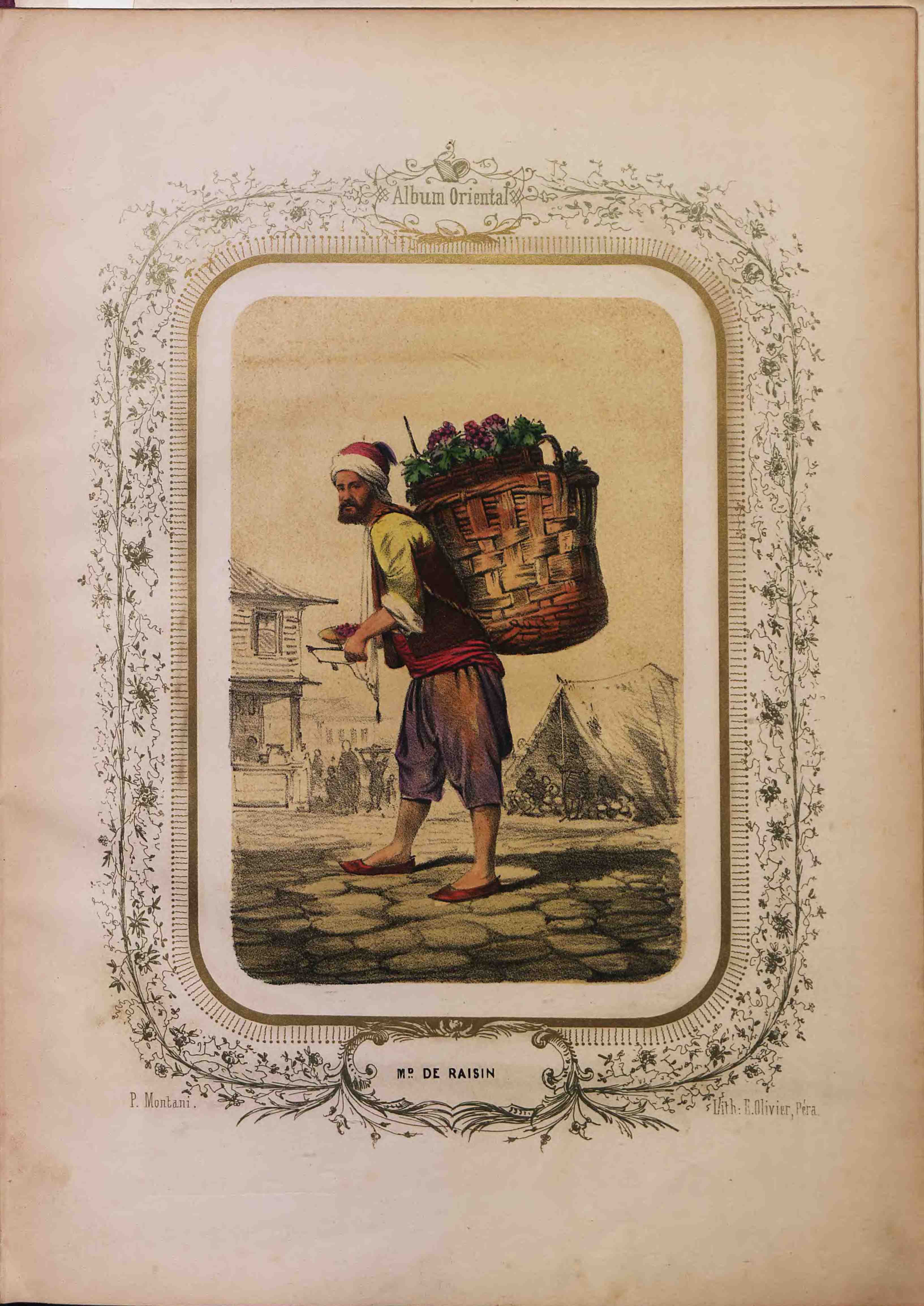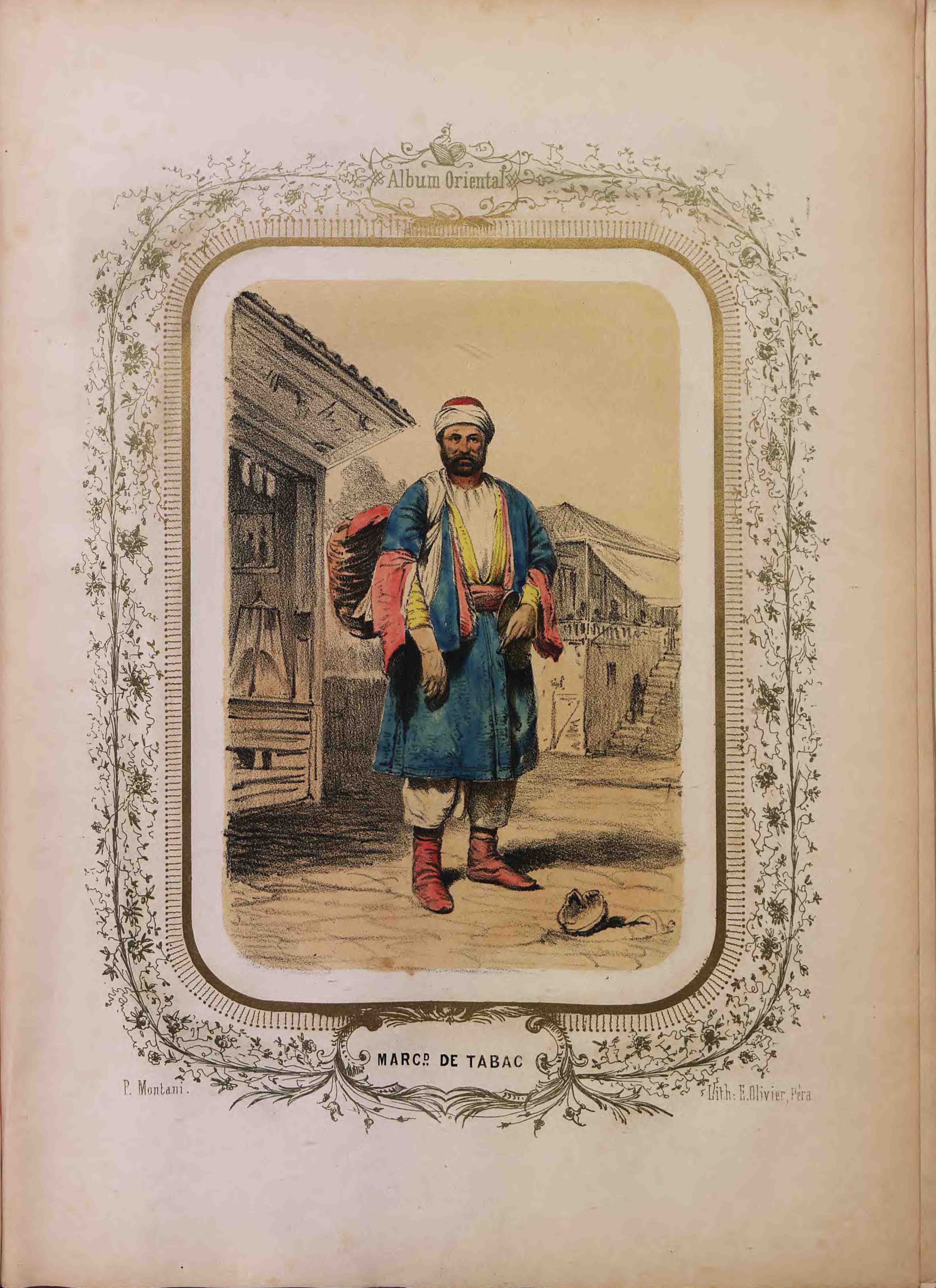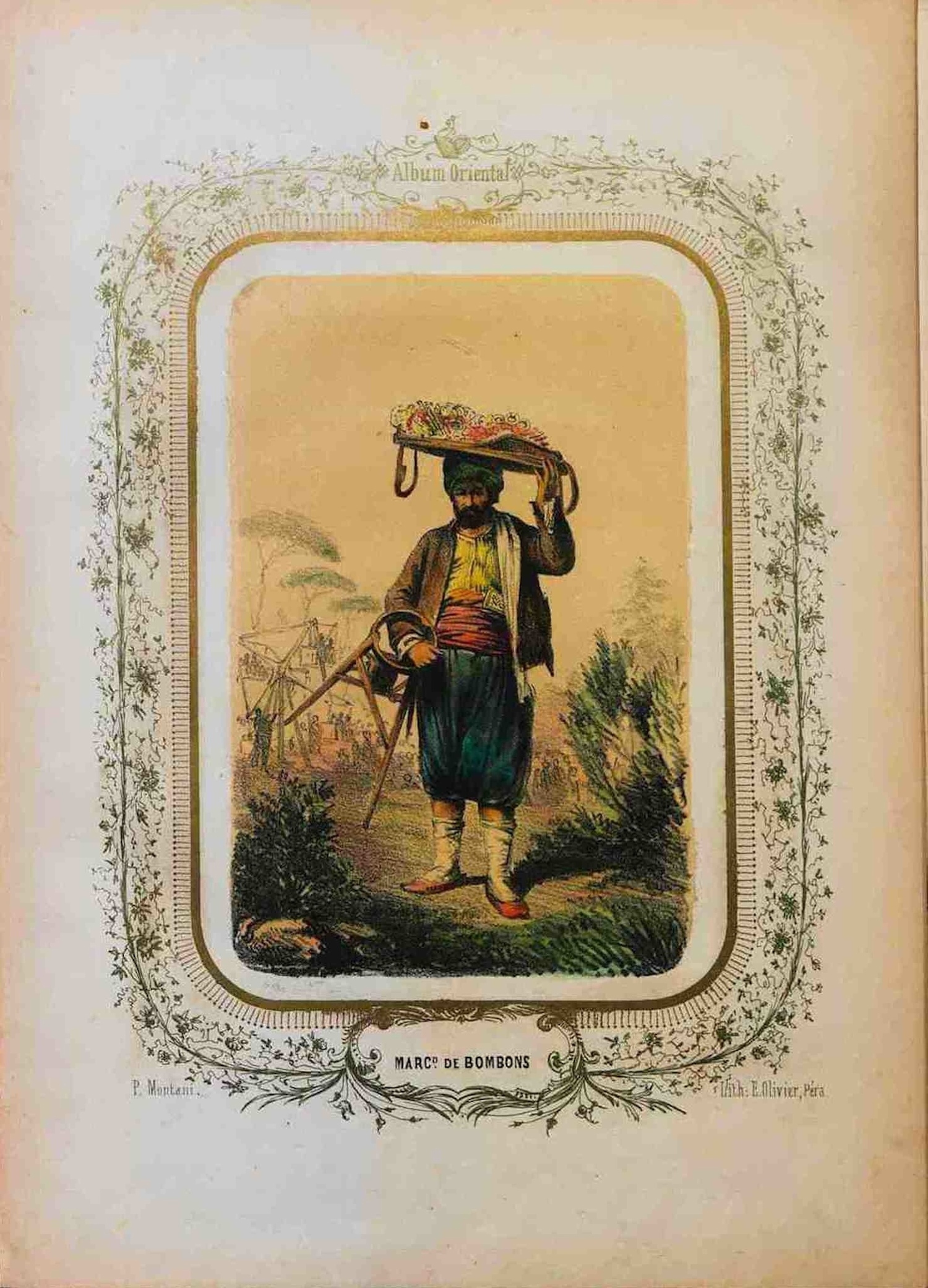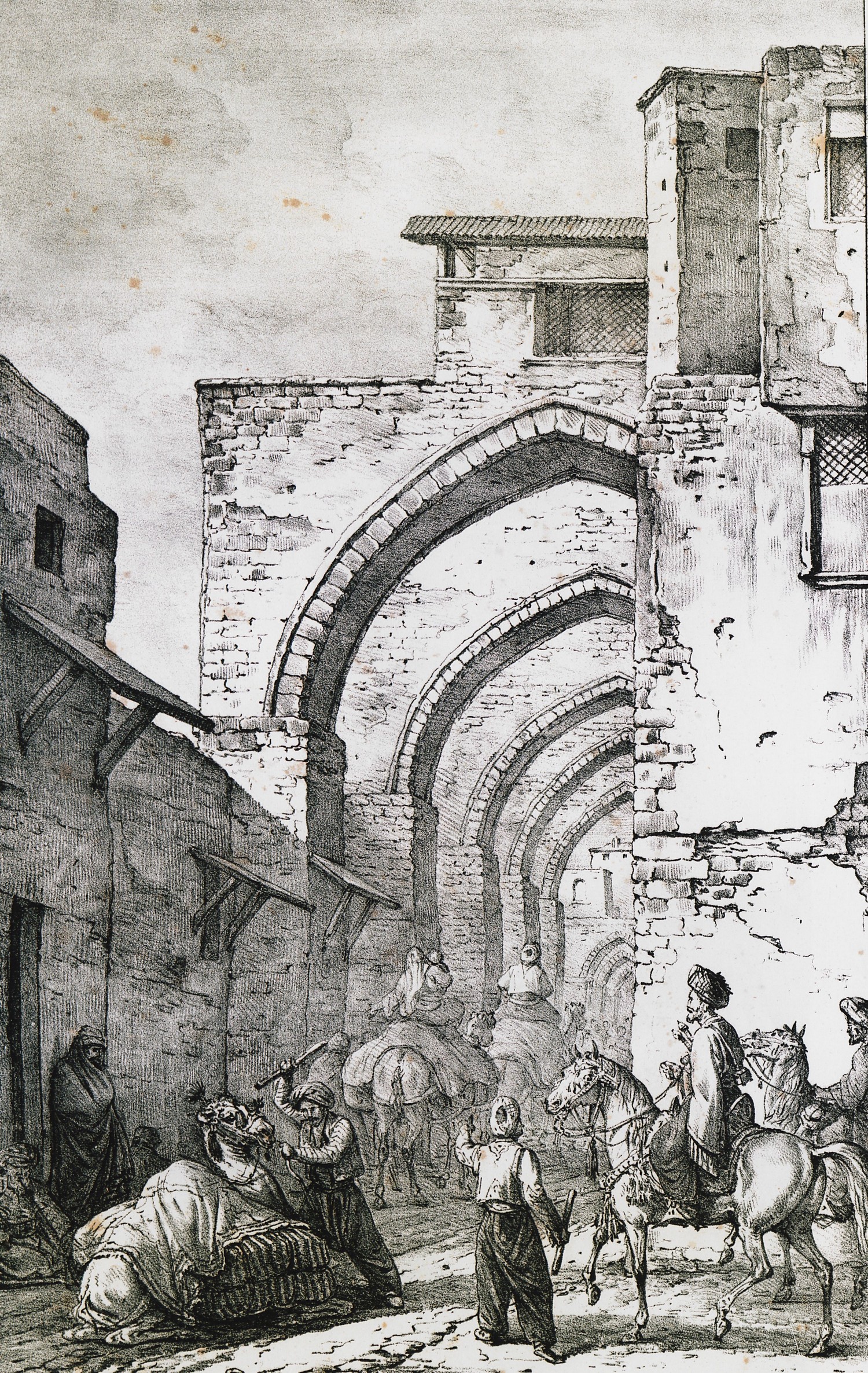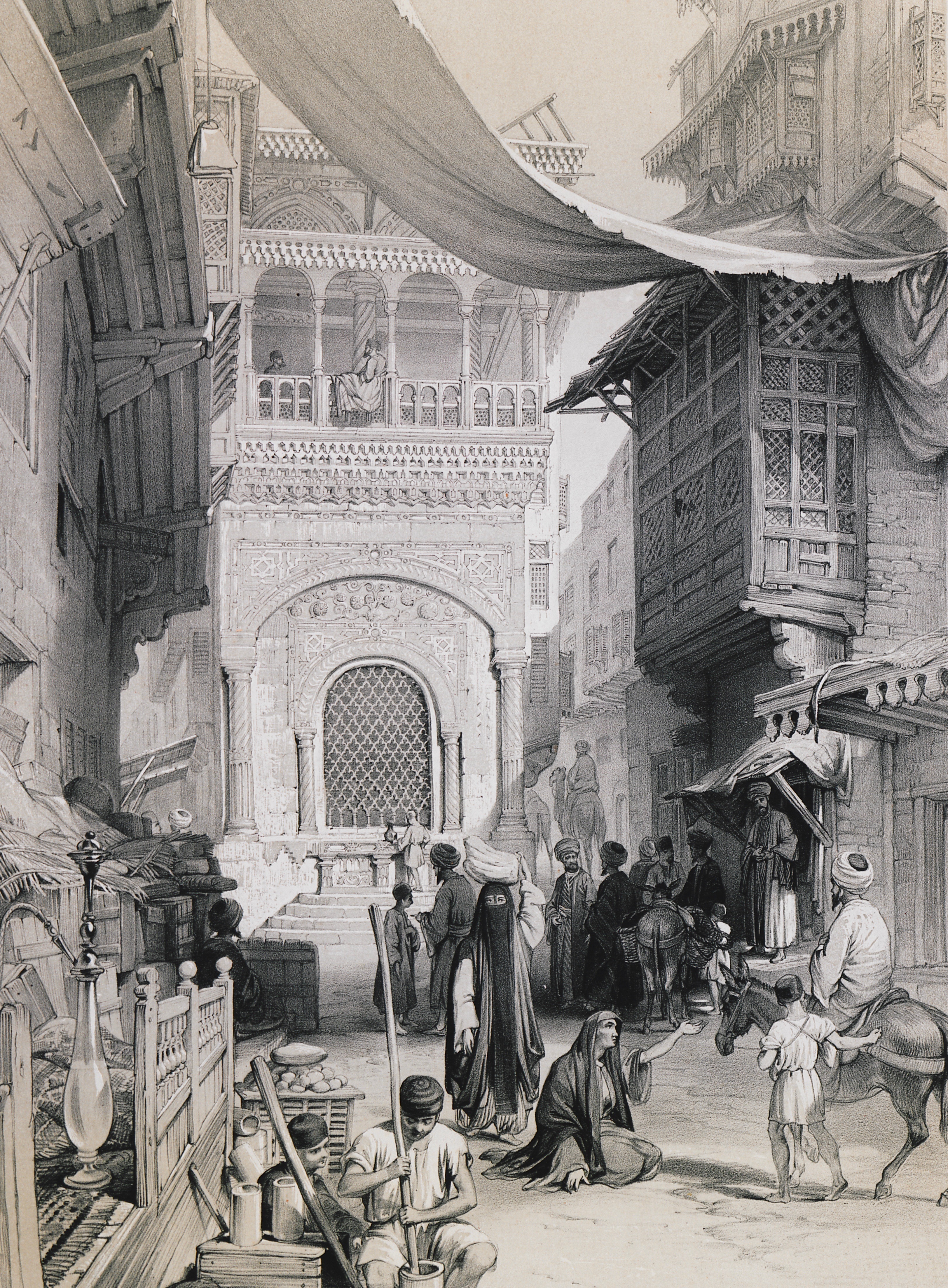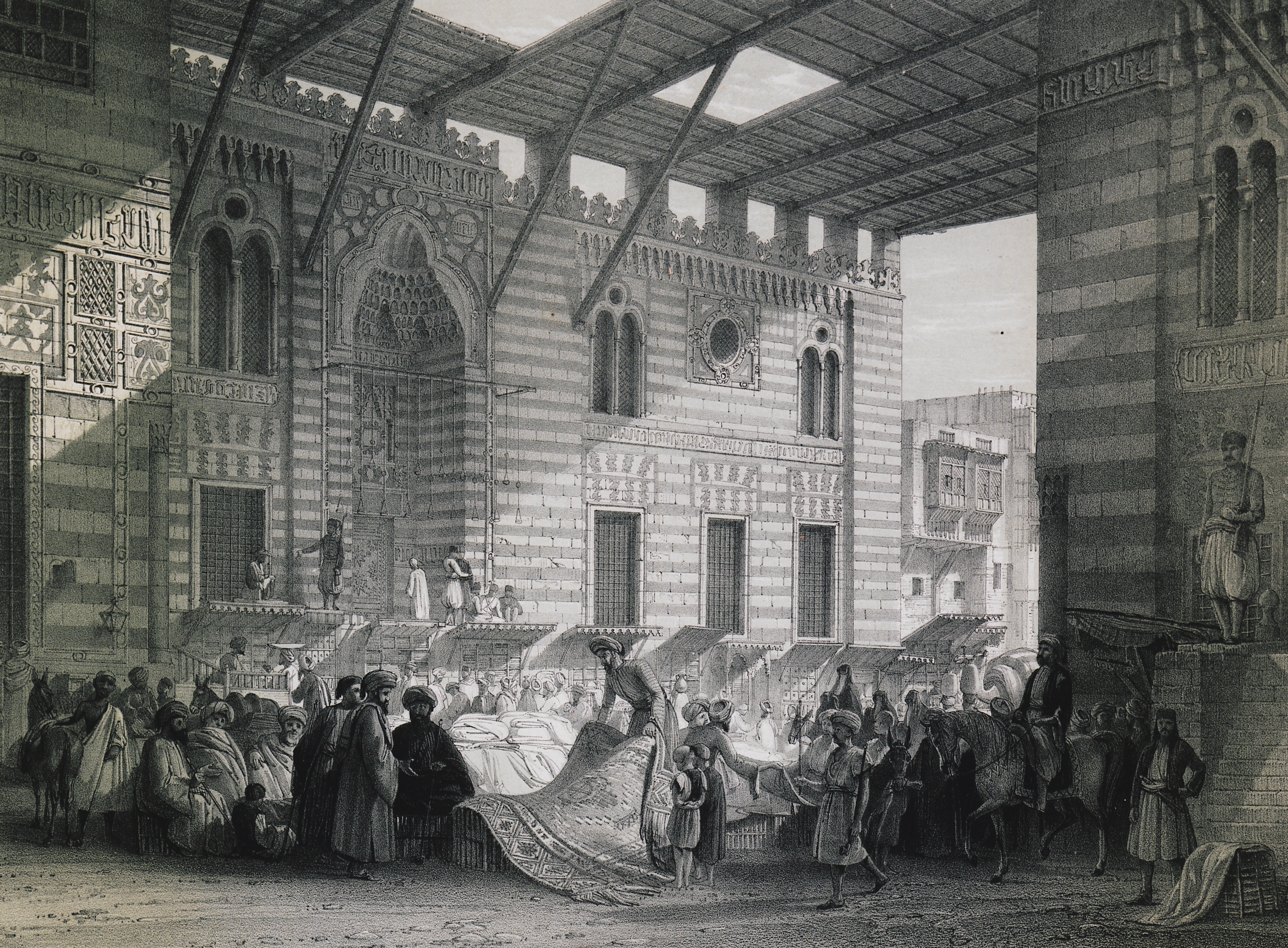Commerce (24 Subjects)
The castle of Arwad on Arwad island.
The bazaar of Athens. On the forefront, on the right, an emancipated African slave. On the doorway, the owner of the coffeehouse who is brigning a tray with coffee to the Ottoman governor Disdar Aga. Disdar Aga is sitting on the stairs, dressed in red, and next to him sits another Turkish aga. Standing at the entrance of the coffeehouse, the Greek voivode (governor) of Salamis island, who is conversing a Greek Baratario (protegé of a foreign power). At the centre of the picture, three Turkish women covered with long white veils. According to Edward Dodwell's description, the rest of the women depicted are Arvanite. Standing, on the right, a devout Muslim in green costume, an indication that he has made the pigrimage to Mecca.
1. Diamond belonging to the Mongol king of India. 2. Diamond belonging to the Duke of Tuscany. 3. Rough diamond of 242 carats. The author states that this was the bigger diamond he ever saw at the hands of the merchants of India. 4. Rough diamond bought by the author at Ahmedabad, India. 5. Finished diamond. 6. Rough diamond bought by the author in India. 7,8. Rough and finished diamond, of a total weight of 104 carats. The diamonds were bought by an affluent Danish merchant in the presence of the author.
Types of rough and finished gemstones: diamonds and rubies.
1. Ruby bought by the uncle of the King of the Mongols in India for 90.000 rupees. The ruby was presented to the king on its birthday. 3,4. Rubies belonging to the king of Visapur, India. 5. Ruby belonging to affluent merchant from Varanasi, India. 6. Topaz belonging to the Mongol king of India.
1. Pearl belonging to the king of Persia. According to the author the pearl was bought from an Arab merchant of Katifa in 1633 for 32.000 toman. 2. Pearl belonging to the Mongol king of India. 3. Pearl sold by the author to the governor of Bengal, uncle of the Mongol king of India. 4. Pearls belonging to the Mongol king of India.
Dutch ship in which the author sailed from India to China. On the right, the emblem of the Dutch East India Company (Vereenigde Oostindische Compagnie).
1,2. Coins minted by turkish merchants and colonists of Fort Saint George at Madras (today Chennai), India. 3-8. Coins minted by Dutch merchants and colonists of Pulicat (today Pazhaverkadu), India.
The numbers used by speakers of all the languages of India alike, for financial and other transactions.
A raft crosses Tigres river at Mosul, Irak.
Pearl fishing outside Bahrein at the Persian gulf.
Pyramid of Cestius, Rome.
Ripetta quay on Tiber river, Rome.
Salario Bridge, Rome.
Acqua Felice or Fountain of Moses, Rome.
The islet of Vlacherna (right) and Pontikonisi, Corfu.
Street view at a market of Istanbul. In the background, Nuruosmaniye Mosque.
Slave trader.
Raisin seller, probably itinerant.
Tobacco seller, probably itinerant.
Itinerant candy seller.
Commercial street at Acre.
Streetlet at Bayn al-Qasrayn quarter, Cairo.
Silk market before the mosque of Mamluk Sultan al-Ghuri.


